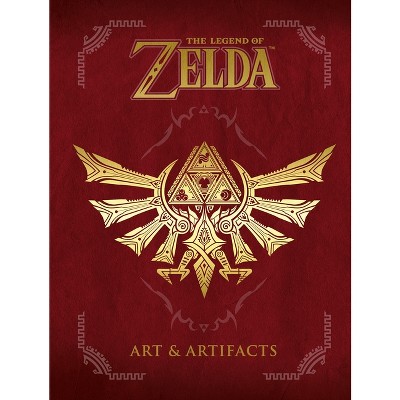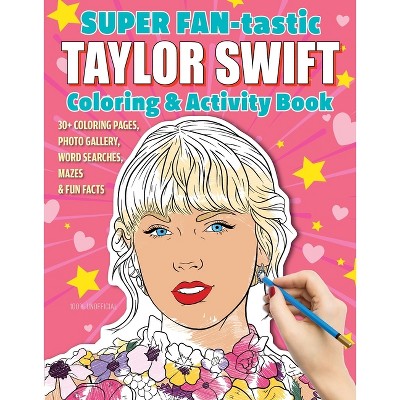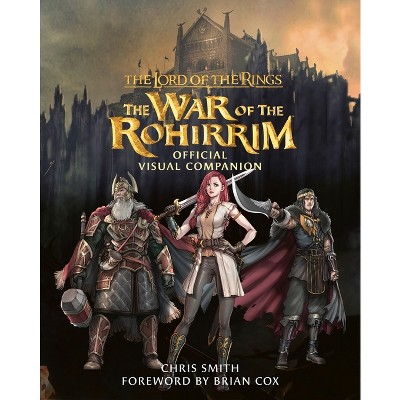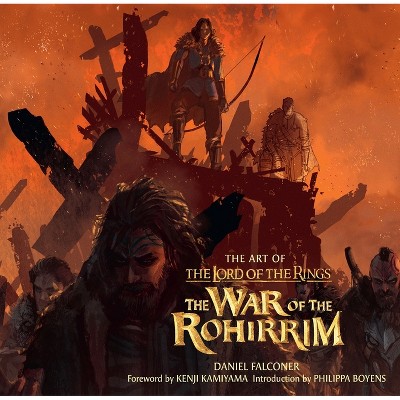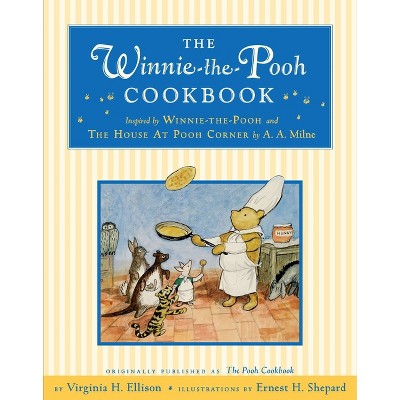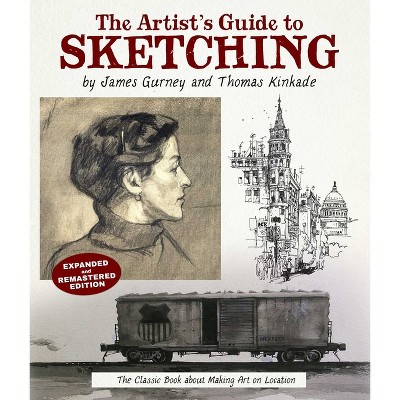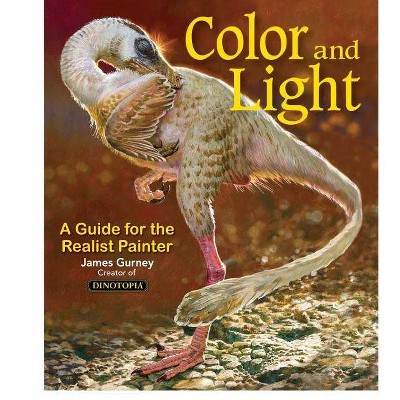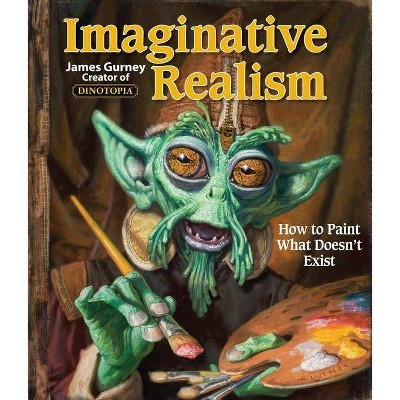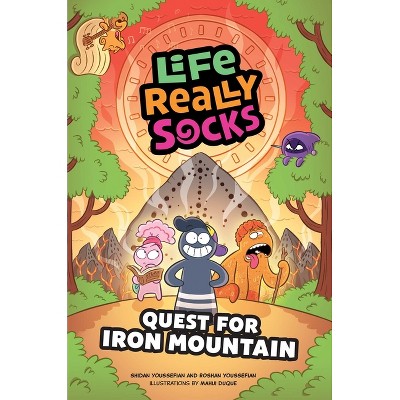Sponsored

How Comics Are Made - by Glenn Fleishman (Hardcover)
$33.57Save $6.43 (16% off)
In Stock
Eligible for registries and wish lists
Sponsored
About this item
Highlights
- "No one, before now, has written a history of the comic strip as a technological artifact--not, at least, in such depth, and on such a sound foundation of research.
- About the Author: Glenn Fleishman is a printing and comics historian and a long-time technology journalist.
- 288 Pages
- Art, Techniques
Description
About the Book
How Comics Are Made explores the history of newspaper comics through the lens of their creation and printing processes. Drawing on extensive research and interviews, the book traces the journey of comics from hand-drawn art to printed page and digital screen. Organized by major technological shifts--from metal relief printing to digital webcomics--it reveals the behind-the-scenes evolution of the medium with rare artwork, production artifacts, and firsthand accounts from artists and industry experts.Book Synopsis
"No one, before now, has written a history of the comic strip as a technological artifact--not, at least, in such depth, and on such a sound foundation of research." - Michael Chabon, author, The Amazing Adventures of Kavalier & Clay If you love comics, you'll love this visual history of comic strips featuring all of the methods, techniques, and wizardry that made the funny pages such an important staple of American life. Featuring interviews with dozens of the century's most famous cartoonists and hundreds of rare archival images. How Comics Are Made covers the entire history of newspaper comics from a unique angle--how they were made and printed. This book combines years of research and dozens of interviews with cartoonists, historians, and production people to tell the story of how a comic starts with an artist's hand and makes it way through transformations into print and onto a digital screen. You'll see reproductions of art and artifacts that have never appeared in print anywhere, and some historic comics will appear for the first time ever in any medium in this book. And you'll find out about metal etching, Dragon's Blood (a real thing), flong (also a real thing), and the massively, almost impossibly complicated path that original artwork took to get onto newsprint in the days of metal relief printing. The book is divided by time and transitions, from the start of consistently appearing daily and weekly comics in newspapers:- The Early Days: From the Yellow Kid in the 1890s to the 1910s
- Syndication in Metal: When it became affordable to make hundreds or thousands of copies of daily strips to send around the country (or world), from the 1910s to 1970s
- Flatland: Newspapers' switch from relief to flat printing and the shift to purely photographic transformations from the 1950s to the 1980s
- Pixel Perfect: The transition from photographic to digital, from scanning to digital creation, from the 1970s to 2000s and through the present day
- Webcomics and Beyond: Look, ma, no ink! Digital comics read online and sometimes put on press to make books
Each section features interviews with artists, reproductions of original cartoon art, printing and coloring artifacts, and the way cartoons appeared in print--or on screen.
Review Quotes
"...if you want to know about how comics were produced for basically any time during the twentieth century, I can assure you this is the best book on the subject." (Sean Kleefeld, comics historian, author of the academic teaching guide Webcomics)
"...no one, before now, has written a history of the comic strip as a technological artifact -- not, at least, in such depth, and on such a sound foundation of research." (Michael Chabon, author, The Amazing Adventures of Kavalier & Clay, from the foreword)
"Glenn interweaves the technological advances with the creators' inventiveness to tell this seemingly familiar story from new angles and greater depths. Well done, indeed." (Michael Jantze, The Norm)
"Having worked in comic strip syndication for over 35 years, the subject matter is especially close to my heart. Some of the deep dives Glenn goes into are stuff from a bygone age I've always wondered about but never had a clue how it was actually done. He also covers topics I'm very familiar with, and everything rings true. My sincere admiration for all the research and hard work that went into this book. It's freakin' fantastic!" (Jim Keefe, artist, Flash Gordon, Sally Forth)
"How Comics Are Made is second only to the behind-the-scenes book on how the sausage gets made. Seriously, an eye-opening and entertaining read." (Keith Knight, The K Chronicles, Woke)
"It is absolutely gorgeous! It is well-researched, tremendously written, and beautifully designed! I'm agog. Just a Herculean effort!" (Brad Guigar, Evil Inc., co-host of the Comic Lab podcast)
"Most of us have been huge comics fans from way back, yet few of us know anything about how they are made. I come from a cartooning family, and I didn't know all I didn't know! If your thing is comics, then you will absolutely love this book!" (Barbara Brandon-Croft, Where I'm Coming From)
"Objects tell stories in unique ways, and Glenn Fleishman captured it beautifully in How Comics Are Made." (Benjamin L. Clark, curator of the Charles M. Schulz Museum and Research Center, Eisner Award winner for Charles M. Schulz: The Art and Life of the Peanuts Creator in 100 Objects)
"Told in loving and exacting detail, How Comics Are Made invites you into the cartoonist's studio where comics get made and into the press room where they get produced. Glenn Fleishman celebrates America's best loved art form, the comic strip, from paper to pixels, and all the people who help make them." (Alexis E. Fajardo, creator of Kid Beowulf and comics editor)
"When I received a note from Glenn Fleishman asking if I'd be interested in talking to him about his book How Comics Are Made, I was happy to talk to him. Truly, without the people who love, analyze, study, and enjoy comic art, much of what we do as cartoonists would be lost forever. Books like this make it easier for students and others to research an art form that is a reflection of life as it's currently happening. Cartoons can make you laugh - they can also make you aware of important political and social norms. The adage "many a truth was said in jest" is the cartoonist's guideline. For all those who say that comics are not art - I refer you to books like How Comics Are Made to see that not only are these illustrations masterfully crafted, but they have something to say. In a world where too many capable public servants are quiet, you can rely on a cartoonist to clearly speak out loud!" (Lynn Johnston, For Better or For Worse)
About the Author
Glenn Fleishman is a printing and comics historian and a long-time technology journalist. A regular contributor over decades to publications that include the Economist, the New York Times, Wired, and Fast Company, Fleishman spent a large part of his career reporting on what was just over the horizon, like ubiquitous access to wireless data and the rise of tiny satellites. He has appeared on All Things Considered, Morning Edition, Marketplace, and the BBC's Last Word. The editor and project manager of the three-volume Shift Happens history of keyboards, Fleishman splits his time now between intensive studies in material printing history from the 18th to 21st centuries, working with self-published authors to edit and produce their books, and writing hands-on advice for technology users. A two-time Jeopardy! champion, he lives in Seattle.Dimensions (Overall): 8.3 Inches (H) x 10.8 Inches (W) x 1.0 Inches (D)
Weight: 2.8 Pounds
Suggested Age: 22 Years and Up
Number of Pages: 288
Genre: Art
Sub-Genre: Techniques
Publisher: Andrews McMeel Publishing
Theme: Cartooning
Format: Hardcover
Author: Glenn Fleishman
Language: English
Street Date: June 3, 2025
TCIN: 94151292
UPC: 9781524898779
Item Number (DPCI): 247-42-7566
Origin: Made in the USA or Imported
If the item details aren’t accurate or complete, we want to know about it.
Shipping details
Estimated ship dimensions: 1 inches length x 10.8 inches width x 8.3 inches height
Estimated ship weight: 2.8 pounds
We regret that this item cannot be shipped to PO Boxes.
This item cannot be shipped to the following locations: American Samoa (see also separate entry under AS), Guam (see also separate entry under GU), Northern Mariana Islands, Puerto Rico (see also separate entry under PR), United States Minor Outlying Islands, Virgin Islands, U.S., APO/FPO
Return details
This item can be returned to any Target store or Target.com.
This item must be returned within 90 days of the date it was purchased in store, shipped, delivered by a Shipt shopper, or made ready for pickup.
See the return policy for complete information.


